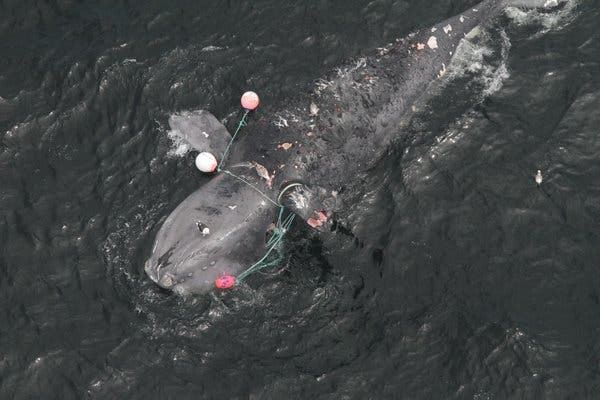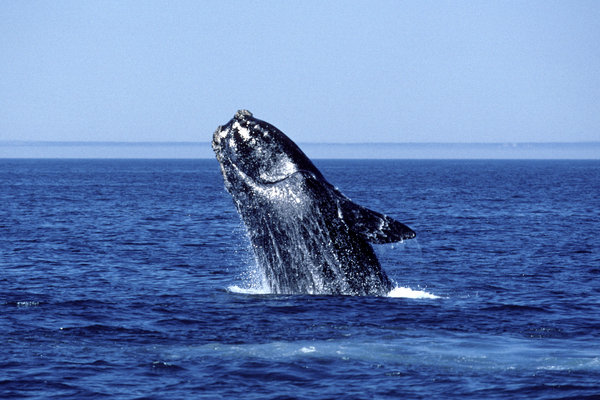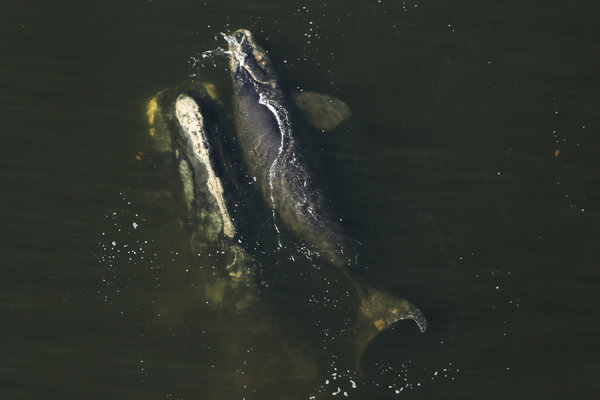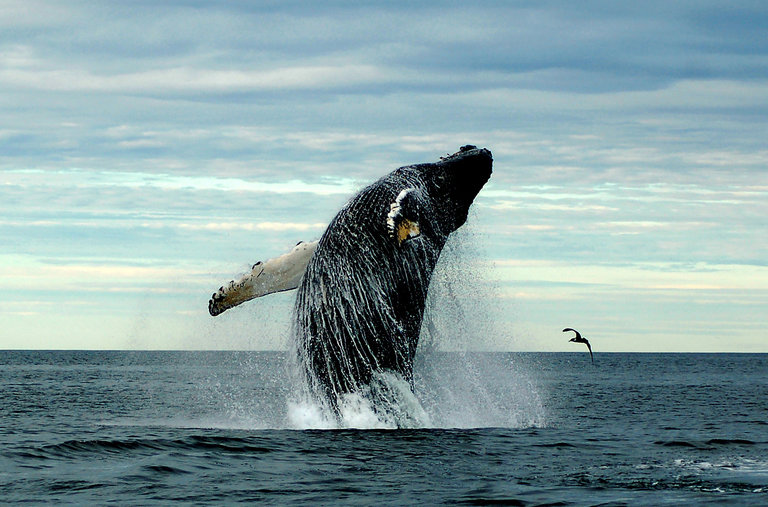A second North Atlantic right whale has been found dead in the Gulf of St. Lawrence.
The whale, named Punctuation, was a breeding female who had mothered eight calves and then gone on to have several grandchildren, making her death a significant loss for a dwindling population.
No cause of death has been determined for either Punctuation or a younger male named Wolverine, who died earlier this month. It’s often difficult to figure out the precise cause of death.
“For a population in decline and struggling with reproduction over the last few years, the loss of her reproductive success is a tremendous loss to the species,” according to a statement by the New England Aquarium, which tracks the whale population.
A new study, published June 20 in the journal Diseases of Aquatic Organisms, looked at 70 North Atlantic right whale deaths recorded from 2003 through 2018. It found that of the 43 deaths in which a cause could be determined, 90 percent were from entanglements in fishing lines or collisions with vessels.
None of the adult or juvenile deaths were from natural causes — all died as a result of human activities, the paper found.
The study offered several recommendations for reducing whale deaths, such as switching to ropeless fishing gear, limiting boat speeds across larger areas of the coastline, closing fisheries and expanding speed restrictions when right whales are spotted nearby, and more research to better understand whale habits and dangers.
The study was written by scientists from a number of organizations, including the International Fund for Animal Welfare, the Virginia Aquarium & Marine Science Center, the Florida Fish and Wildlife Conservation Commission, Université de Montréal, NOAA Fisheries, the New England Aquarium and the Woods Hole Oceanographic Institution.

CreditNOAA/Northeast Fisheries Science Center
The last formal count in 2017 indicated there were 411 remaining North Atlantic right whales. Seven newborn calves were spotted this year, up from five in 2017 and none last year.
Right whales, which can grow longer than a school bus, are identified by the unique pattern of a “callosity” — the roughened skin patches on their heads. Researchers at the New England Aquarium have maintained a catalog of the species since the early 1970s.
Wolverine, a 9-year-old male, was found dead on June 4. He was first sighted in 2010 off the coast of Florida, then Georgia and then southern New England as he and his mother returned from breeding grounds in the South. He had been spotted many times since, mostly in Cape Cod Bay. (His mother was believed to have died in 2013 after a severe entanglement with fishing gear.)
[Like the Science Times page on Facebook. | Sign up for the Science Times newsletter.]
In 2017, Wolverine was spotted for the first time in the Gulf of St. Lawrence off Canada, farther north than the species usually traveled. Research suggests that the whales are following their food to new territory possibly in response to climate change, bringing them into areas where there are fewer regulations designed to protect them.
Two years ago, 17 North Atlantic right whales were found dead, including 12 in Canadian waters. Three were found dead last year, all in the United States. Wolverine and Punctuation are the only North Atlantic right whales known to have died this year.
North Atlantic right whale #1281 was named “Punctuation” because scientists thought the small scars on her head looked like dashes and commas. Her carcass was found floating on June 20. Since 1981, she has been sighted more than 250 times up and down the Eastern Seaboard.
Two of Punctuation’s eight calves have been spotted with calves of their own. One of her calves, #4681, was struck and killed by a ship in 2016. Another daughter had disappeared a year after her own daughter was killed by an entanglement. A grandson was spotted in 2011 with deep propeller cuts to his back and has not been seen since. He is presumed dead.
Researchers now want Punctuation’s body brought ashore for a necropsy. Wolverine’s carcass has been tagged, but not brought ashore yet.
“Understanding how and why right whales are killed is essential to evaluating and improving management and conservation efforts aimed at saving this species,” the aquarium said. “In the meantime, researchers mourn the loss of yet another important whale in this population and an old friend we’ll dearly miss seeing out on the water.”





